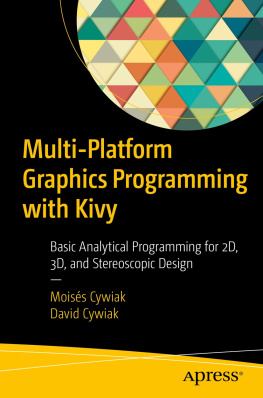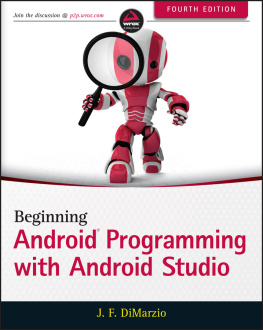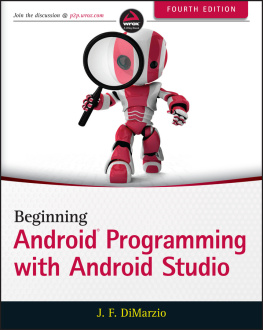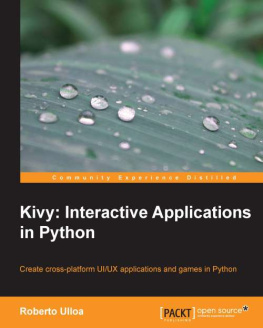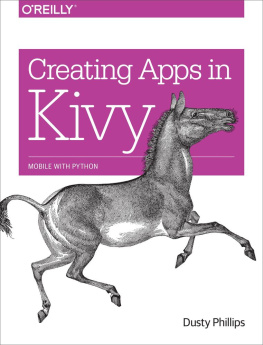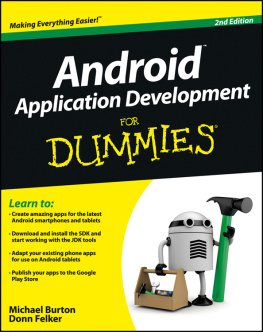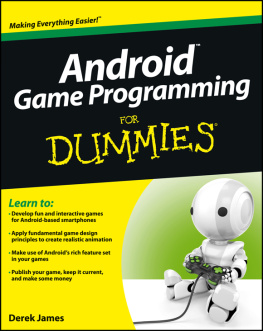Moisés Cywiak - Multi-Platform Graphics Programming with Kivy: Basic Analytical Programming for 2D, 3D and Stereoscopic Design
Here you can read online Moisés Cywiak - Multi-Platform Graphics Programming with Kivy: Basic Analytical Programming for 2D, 3D and Stereoscopic Design full text of the book (entire story) in english for free. Download pdf and epub, get meaning, cover and reviews about this ebook. year: 2021, publisher: Apress, genre: Home and family. Description of the work, (preface) as well as reviews are available. Best literature library LitArk.com created for fans of good reading and offers a wide selection of genres:
Romance novel
Science fiction
Adventure
Detective
Science
History
Home and family
Prose
Art
Politics
Computer
Non-fiction
Religion
Business
Children
Humor
Choose a favorite category and find really read worthwhile books. Enjoy immersion in the world of imagination, feel the emotions of the characters or learn something new for yourself, make an fascinating discovery.
- Book:Multi-Platform Graphics Programming with Kivy: Basic Analytical Programming for 2D, 3D and Stereoscopic Design
- Author:
- Publisher:Apress
- Genre:
- Year:2021
- Rating:3 / 5
- Favourites:Add to favourites
- Your mark:
Multi-Platform Graphics Programming with Kivy: Basic Analytical Programming for 2D, 3D and Stereoscopic Design: summary, description and annotation
We offer to read an annotation, description, summary or preface (depends on what the author of the book "Multi-Platform Graphics Programming with Kivy: Basic Analytical Programming for 2D, 3D and Stereoscopic Design" wrote himself). If you haven't found the necessary information about the book — write in the comments, we will try to find it.
Modern science requires computer graphics models to provide realistic visual renderings. Learning the appropriate programming tools for 2D and 3D modeling doesnt have to be so difficult. This book reviews the best programming tools to achieve this and explains how to apply them to mobile platforms like Android.
Multi-Platform Graphics Programming with Kivy provides a straightforward introductory approach for designing 2D, 3D, and stereoscopic applications, using analytical equations from vector algebra. Throughout the book youll look closely at this approach and develop scenes in Kivy, taking advantage of powerful mathematical functions for arrays by NumPy for Python.
Unbuntu is used to develop the programs, which allows you to easily convert to Android platform. Each chapter contains step-by-step descriptions on each subject and provides complete program listings.
What Youll Learn
Work with Kivy, a modern, powerful multi-platform graphics system
Convert and run programs on Android devices
Program, fill faces, and rotate 2D and 3D polygons
Apply the concepts of 2D and 3D applications
Develop stereoscopic scenes
Review a straightforward introduction to 2D, 3D, and stereoscopic graphics applications
Use simple analytical equations from vector algebra
Who This Book Is For
The primary audience is students and researchers in graphics programming with experience in analytical equations.
Moisés Cywiak: author's other books
Who wrote Multi-Platform Graphics Programming with Kivy: Basic Analytical Programming for 2D, 3D and Stereoscopic Design? Find out the surname, the name of the author of the book and a list of all author's works by series.

